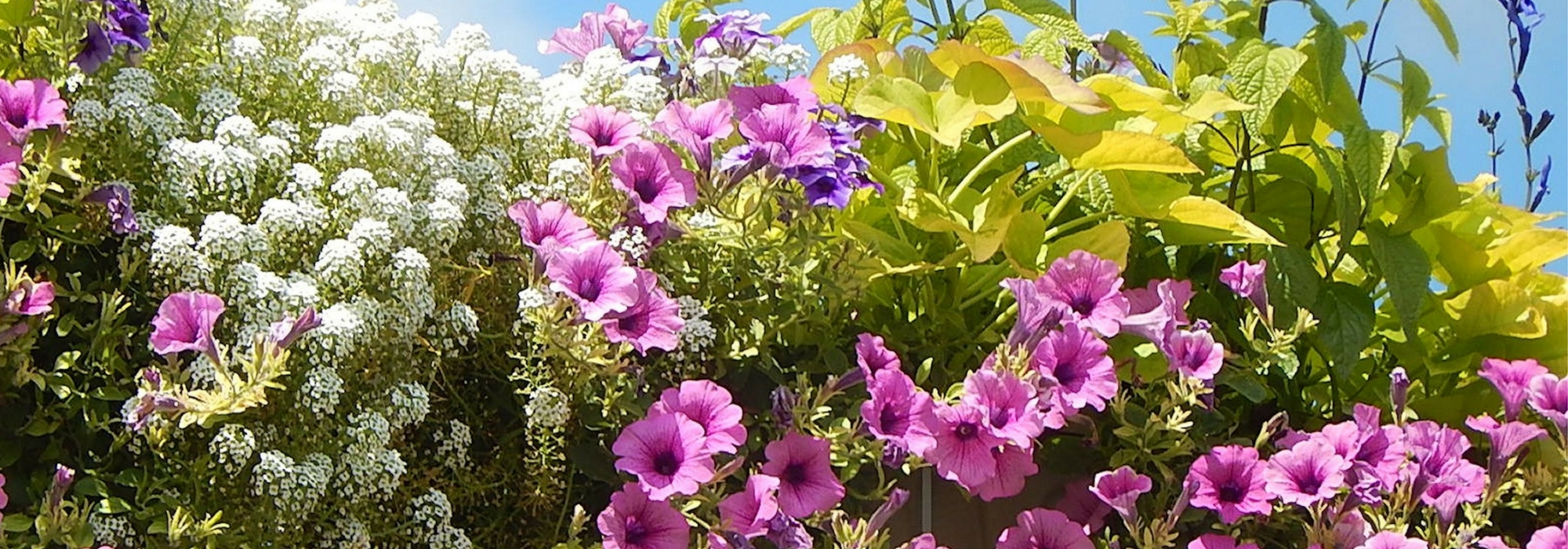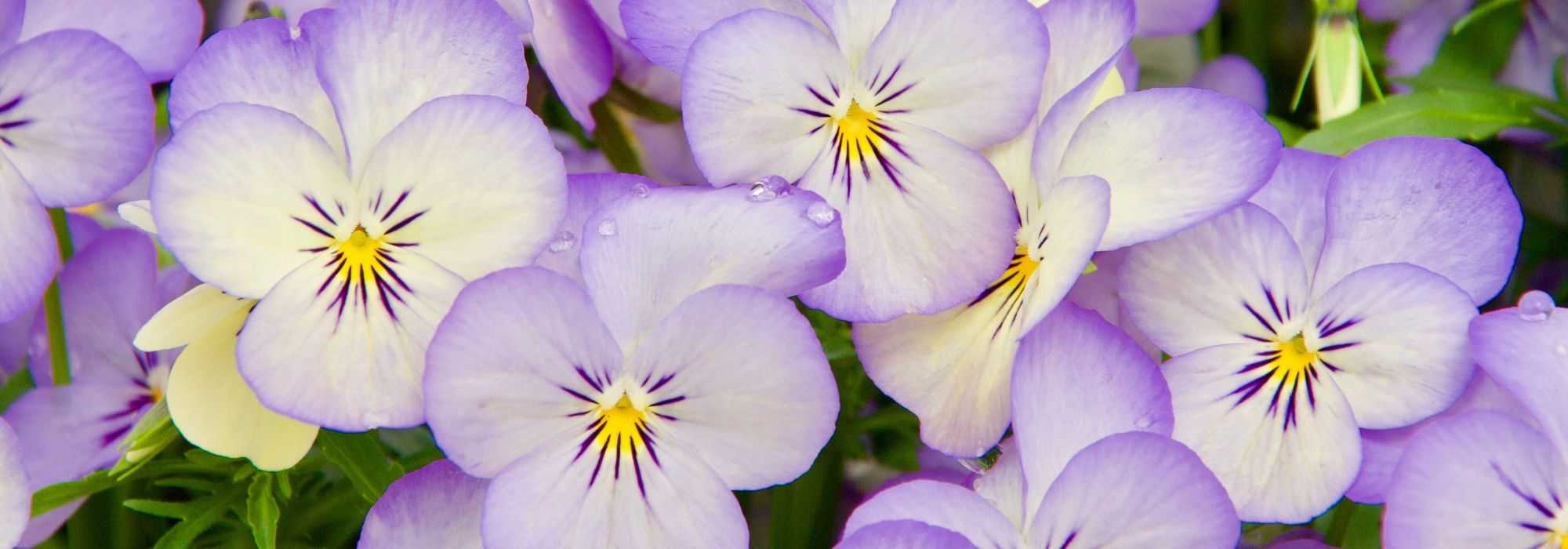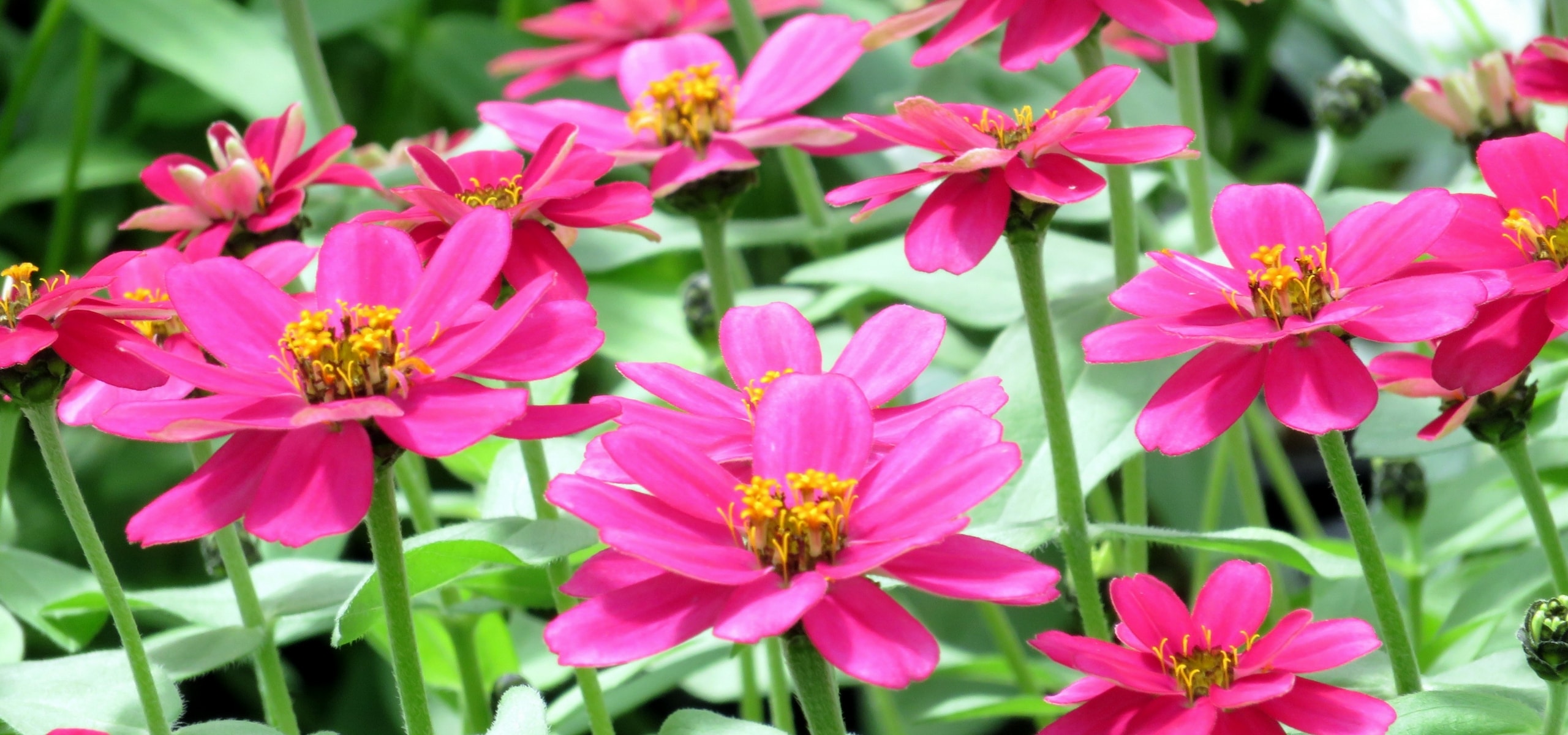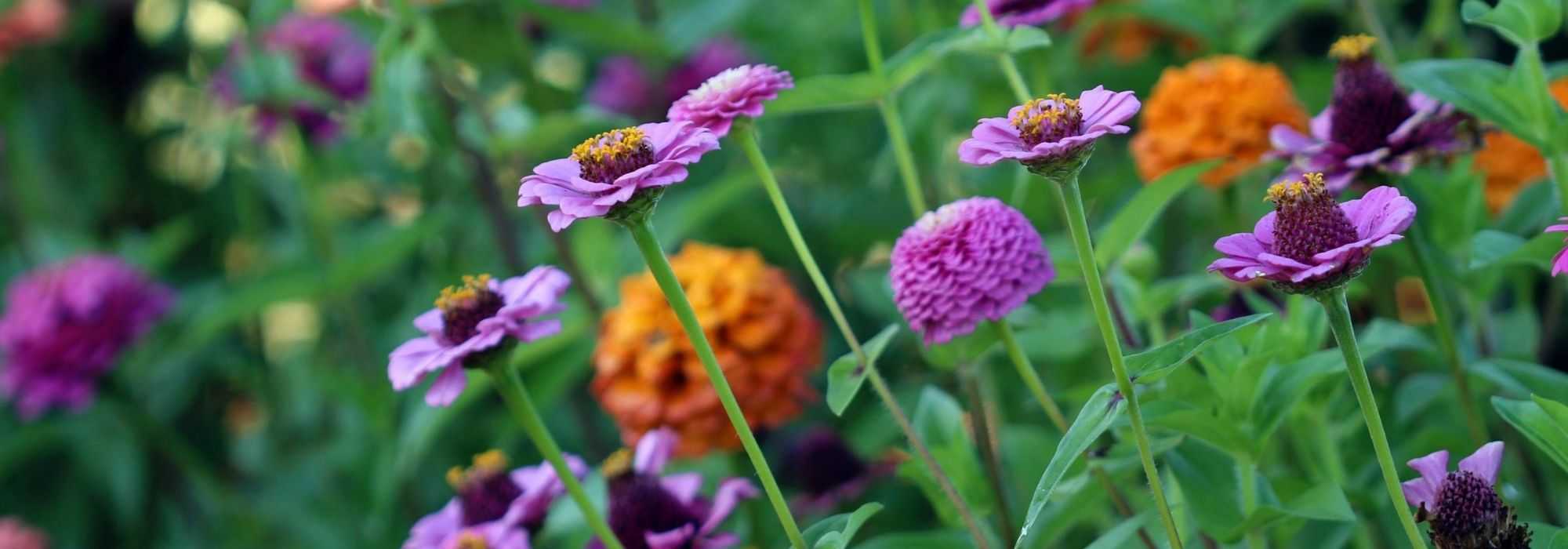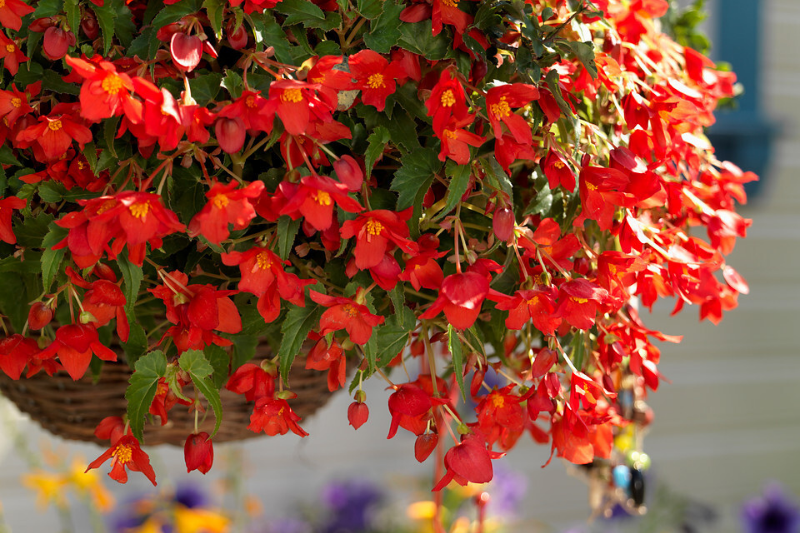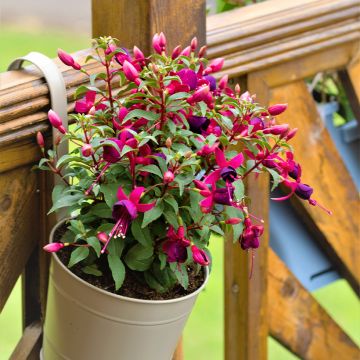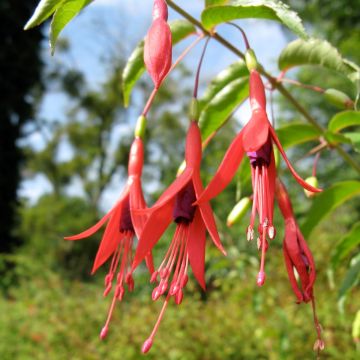

Rosebud primrose Collection - Primula acaulis
Rosebud primrose Collection - Primula acaulis
Primula (x) hybrida Rosebud F1 Crocus blue, Light yellow, Red Shades, Tutti frutti, White
Fortunately, they were well wrapped in their little box because my package was in a sorry state. Lack of seriousness from the carriers.
Plume, 15/10/2024
Special offer!
Receive a €20 voucher for any order over €90 (excluding delivery costs, credit notes, and plastic-free options)!
1- Add your favorite plants to your cart.
2- Once you have reached €90, confirm your order (you can even choose the delivery date!).
3- As soon as your order is shipped, you will receive an email containing your voucher code, valid for 3 months (90 days).
Your voucher is unique and can only be used once, for any order with a minimum value of €20, excluding delivery costs.
Can be combined with other current offers, non-divisible and non-refundable.
This plant carries a 6 months recovery warranty
More information
We guarantee the quality of our plants for a full growing cycle, and will replace at our expense any plant that fails to recover under normal climatic and planting conditions.
Would this plant suit my garden?
Set up your Plantfit profile →
Collection items (5 plants)
-
Primula vulgaris Rosebud F1 Crocus blue - English Primrose
Price per single item: 1,20 €Find out more -
Primula vulgaris Rosebud F1 Light yellow - English Primrose
Price per single item: 1,20 €Find out more -
Primula vulgaris Rosebud F1 Red Shades - English Primrose
Price per single item: 1,20 €Find out more -
Primula vulgaris Rosebud F1 Tutti frutti - English Primrose
Price per single item: 1,20 €Find out more
Description
This Collection of Primula acaulis offers 5 varieties of primroses from the Rosebud F1 series, particularly early, with semi-double flowers that resemble just bloomed rose buds. These small biennial plants that flower in the heart of winter are precious for brightening up window sills, flower boxes, the edge of a path or the foreground of a flower bed.
The collection consists of:
1 plug plant of Primrose Rosebud F1 'Crocus Blue': flowers of a deep and rich indigo blue, approaching violet.
1 plug plant of Primrose Rosebud F1 'Light Yellow': pastel colour, light yellow.
1 plug plant of Primrose Rosebud F1 'Red Shades': strongly wavy corollas, with a rose red colour nuanced with coral.
1 plug plant of Primrose Rosebud F1 'Tutti Frutti': this variety has delightful soft pastel colours: a range of pink, salmon pink and tender yellow.
1 plug plant of Primrose Rosebud F1 'White': a pure white variation, offering a nice contrast with very dark green ornamental foliage.
Hybrid primroses (F1) are small short-lived perennials often grown as biennials. They like partial shade and soil rich in compost, remaining slightly moist. Plant them in pots and flower boxes or directly in the ground with a spacing of 20 cm. Plant them, if possible upon receipt, in September-October or March-April. If the planned location is not yet ready or the conditions are unfavourable for planting, you can let them grow on for 4 to 6 weeks.
In pots and flower boxes, use good potting soil for flowering plants (geranium type) enriched with clay and slow-release fertiliser, light and well-draining. The top of the plug should be level with the soil. Water generously at planting and during the following weeks, as plug plants can dry out quickly. However, be careful with excess water! Make sure to use containers with drainage holes and empty the saucer 10 minutes after watering. Remember to water even during winter if it doesn't rain or if the container is placed in a sheltered location. Do not water during freezing periods.
Very floriferous and fast-growing, primroses are hungry plants. As soon as growth resumes, and throughout the flowering period, provide a complete liquid fertiliser for flowering plants1 to 2 times a week with the watering water. Remove faded flowers to promote new blooms. Once the flowering is over, potted plants can be replanted in the garden in partial shade.
In the garden, primroses are planted at the front of slightly shaded flower beds, especially on the edge of a grove or along pathways. They combine well with spring bulbs such as crocuses, snowdrops, and daffodils. Plant your bulbs in small groups between the clumps of primroses. Primroses create charming compositions with pansies and violets.
Note: Attention, our young plug plants are products reserved for experienced gardeners: upon receipt, transplant them as soon as possible, in pots, flower boxes or directly in flower beds.
Report an error about the product description
Flowering
Foliage
Plant habit
Botanical data
Primula
(x) hybrida
Rosebud F1 Crocus blue, Light yellow, Red Shades, Tutti frutti, White
Primulaceae
Primula vulgaris
Cultivar or hybrid
Planting and care
Upon receipt, ideally in September, plant your Rosebud F1 primrose plug plants in a pot, a planter, or a large container, in a semi-shaded location. They require light and humus-bearing soil and appreciate an application of fertiliser. In containers, biennials should be watered at planting and can be stored during winter on a balcony or a windowsill protected from cold winds.
Planting period
Intended location
Care
Planting & care advice
-
, onOrder confirmed
Reply from on Promesse de fleurs
Similar products
Haven't found what you were looking for?
Hardiness is the lowest winter temperature a plant can endure without suffering serious damage or even dying. However, hardiness is affected by location (a sheltered area, such as a patio), protection (winter cover) and soil type (hardiness is improved by well-drained soil).

Photo Sharing Terms & Conditions
In order to encourage gardeners to interact and share their experiences, Promesse de fleurs offers various media enabling content to be uploaded onto its Site - in particular via the ‘Photo sharing’ module.
The User agrees to refrain from:
- Posting any content that is illegal, prejudicial, insulting, racist, inciteful to hatred, revisionist, contrary to public decency, that infringes on privacy or on the privacy rights of third parties, in particular the publicity rights of persons and goods, intellectual property rights, or the right to privacy.
- Submitting content on behalf of a third party;
- Impersonate the identity of a third party and/or publish any personal information about a third party;
In general, the User undertakes to refrain from any unethical behaviour.
All Content (in particular text, comments, files, images, photos, videos, creative works, etc.), which may be subject to property or intellectual property rights, image or other private rights, shall remain the property of the User, subject to the limited rights granted by the terms of the licence granted by Promesse de fleurs as stated below. Users are at liberty to publish or not to publish such Content on the Site, notably via the ‘Photo Sharing’ facility, and accept that this Content shall be made public and freely accessible, notably on the Internet.
Users further acknowledge, undertake to have ,and guarantee that they hold all necessary rights and permissions to publish such material on the Site, in particular with regard to the legislation in force pertaining to any privacy, property, intellectual property, image, or contractual rights, or rights of any other nature. By publishing such Content on the Site, Users acknowledge accepting full liability as publishers of the Content within the meaning of the law, and grant Promesse de fleurs, free of charge, an inclusive, worldwide licence for the said Content for the entire duration of its publication, including all reproduction, representation, up/downloading, displaying, performing, transmission, and storage rights.
Users also grant permission for their name to be linked to the Content and accept that this link may not always be made available.
By engaging in posting material, Users consent to their Content becoming automatically accessible on the Internet, in particular on other sites and/or blogs and/or web pages of the Promesse de fleurs site, including in particular social pages and the Promesse de fleurs catalogue.
Users may secure the removal of entrusted content free of charge by issuing a simple request via our contact form.
The flowering period indicated on our website applies to countries and regions located in USDA zone 8 (France, the United Kingdom, Ireland, the Netherlands, etc.)
It will vary according to where you live:
- In zones 9 to 10 (Italy, Spain, Greece, etc.), flowering will occur about 2 to 4 weeks earlier.
- In zones 6 to 7 (Germany, Poland, Slovenia, and lower mountainous regions), flowering will be delayed by 2 to 3 weeks.
- In zone 5 (Central Europe, Scandinavia), blooming will be delayed by 3 to 5 weeks.
In temperate climates, pruning of spring-flowering shrubs (forsythia, spireas, etc.) should be done just after flowering.
Pruning of summer-flowering shrubs (Indian Lilac, Perovskia, etc.) can be done in winter or spring.
In cold regions as well as with frost-sensitive plants, avoid pruning too early when severe frosts may still occur.
The planting period indicated on our website applies to countries and regions located in USDA zone 8 (France, United Kingdom, Ireland, Netherlands).
It will vary according to where you live:
- In Mediterranean zones (Marseille, Madrid, Milan, etc.), autumn and winter are the best planting periods.
- In continental zones (Strasbourg, Munich, Vienna, etc.), delay planting by 2 to 3 weeks in spring and bring it forward by 2 to 4 weeks in autumn.
- In mountainous regions (the Alps, Pyrenees, Carpathians, etc.), it is best to plant in late spring (May-June) or late summer (August-September).
The harvesting period indicated on our website applies to countries and regions in USDA zone 8 (France, England, Ireland, the Netherlands).
In colder areas (Scandinavia, Poland, Austria...) fruit and vegetable harvests are likely to be delayed by 3-4 weeks.
In warmer areas (Italy, Spain, Greece, etc.), harvesting will probably take place earlier, depending on weather conditions.
The sowing periods indicated on our website apply to countries and regions within USDA Zone 8 (France, UK, Ireland, Netherlands).
In colder areas (Scandinavia, Poland, Austria...), delay any outdoor sowing by 3-4 weeks, or sow under glass.
In warmer climes (Italy, Spain, Greece, etc.), bring outdoor sowing forward by a few weeks.






































